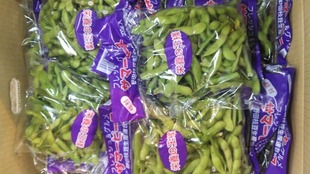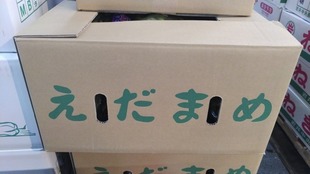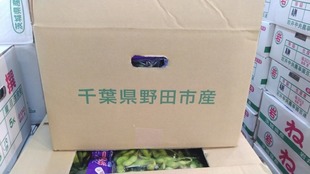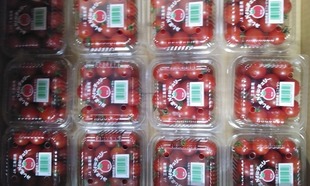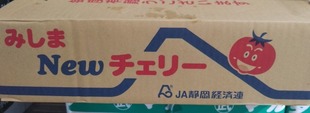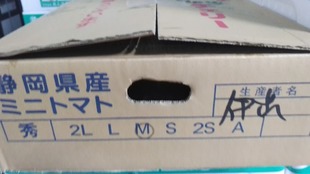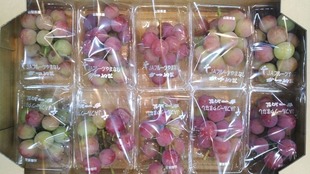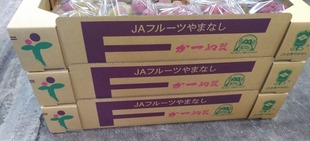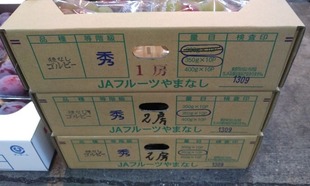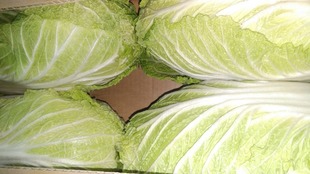Ikka Transmission: In order to put emotion and inspiration into an object, the invisible power of the "dynamics of thoughts" is important.
One small round thing, one grain
【Product name】
Setoka Oranges
【Type】
Citrus L.
【Within the jurisdiction】
Saijo City, Ehime Prefecture (formerly Toyo City, formerly Tanbara Town, Shuso County, formerly Komatsu Town) (JA Shuso)
【Origin of the name】
The variety names are Hayasaki Seto(Known as the strait between the Shimabara Peninsula and the Amakusa Islands), “Setouchi region”, and "fragrance". Old Named registered varieties: Registration number: Tangor Norin No.8 Registration date: August 21, 1998(Kuchinotsu No. 19 Mandarin Orange)
【Main features】
Saijo City is located in the eastern part of Ehime Prefecture. It is surrounded by Mt. Ishizuchi, the highest peak in western Japan, to the south, and the Seto Inland Sea to the north. The area is beloved in Japan for its mild climate, rich natural environment represented by the high-quality Uchinuki fountain, and attractive tourism resources such as historical temples and famous hot springs. In addition, Naked Barley(One of the system names that focuses on the nakedness of barley grains. Among barley cultivars, the seeds do not adhere to the skin and are easily separated, so the skin can be peeled off simply by rubbing and the smooth seeds can be taken out), which boasts the largest production volume in Japan, is one of the system names that focuses on the nakedness of barley grains. It is a major production area for a wide variety of agricultural products such as varieties that can be peeled off and slippery fruit), Atago persimmon, and seven spring herbs. It is also the largest industrial area in Shikoku, with factories for beverages and electrical machinery. It has become. Of Saijo City, which was created through an administrative merger in November 2004, JA Shuso covers former Toyo City, former Tanbara Town, Shuso County, and Komatsu Town. To the west, it is bordered by Toon City and Matsuyama City via the Takanawa Mountain Range, and to the south by the Ishizuchi Mountain Range. JA jurisdiction is 14.5 km east-west, 25 km north-south, total area about 279 km2. The head office is located at the current location of Ikeda, Tanbara Town, which is roughly in the center of the district (133°4'6"E, 33°54'18"N, 15.8m above sea level), and the JR Yosan Line runs along the coastline. There are Komatsu, Tamanoe, Mibugawa, and Miyoshi stations. The Matsuyama Expressway runs parallel to National Route 11 and has an interchange in Komatsu Town. In addition, the Imabari-Komatsu Expressway, which opened in July 1999, has the Toyo-Tanbara Interchange and the Komatsu-Kita Interchange. Promoting interaction with local communities. National Route 11 runs east and west from the south, leading to Niihama City in the east and Matsuyama City in the west. In addition, a wide-area agricultural road runs through the central part of the Dozen Plain and leads to Imabari City. Sightseeing spots include Hondani Onsen, which is known as one of the three hot springs of Iyo along with Dogo Onsen in Matsuyama City and Nibukawa Onsen in Imabari City, and Hiuchi Sea, which is designated as a national park and has a wide stretch of white pine trees. Many tourists visit Kyukamura Setouchi Toyo in search of fresh seasonal seafood. Toyo Port, which was designated as an important port in 1964, is an important route for marine transportation, with ferries on the Hanshin route in service. Cultivated land area of 2,825 ha, of which 2,301 ha is rice field, 129 ha of ordinary field, and 395 ha of orchard. The average household cultivated area is 51.030859 ha. In addition, it has 17,741 ha of forest. The farming style incorporates mainly rice and wheat, fruit trees, greenhouse horticulture (cucumbers, strawberries, melons, flowers, asparagus, etc.), and livestock (cows, pigs, dairy farming). The Saijo district is located in the eastern part of Ehime Prefecture. The Shikoku Mountain Range, including Mt. The total area is 509 km2, About 31% (156 km2) of this is inhabitable land, and the remaining 69% is forest. Rural areas range from the coastal zone at 0 m to mountainous areas at an altitude of 1,500 m, and have diverse natural environments and ecosystems. Centered around the two large rivers of Kamogawa and Nakayamagawa that flow from the Shikoku mountain range, 53 small and medium-sized rivers flow into the Seto Inland Sea, supporting the region with abundant subsoil water, forming one of the prefecture's leading agricultural areas. Blessed with a mild climate unique to the Setouchi region, the average annual temperature is 16.2°C and the average annual precipitation is 1,462 mm (Tanbara Meteorological Observatory 1996-2005). The plains have a Seto Inland Sea climate, which is warm and blessed with an environment for living and industrial activities. On the other hand, the mountainous area is one of Shikoku's heaviest rainfall areas, and it seems that there is a lot of snowfall in winter. In recent years, frequent torrential rains due to abnormal weather have caused many landslide disasters. In 2004, 10 of his typhoons made landfall, causing severe rain disasters. On September 29, 150 mm of rain was observed at Kurose Dam in Saijo City for one hour from 4:00 to 5:00 pm due to Typhoon No.21. Because a large amount of rain flowed through the mountain stream at once, many debris flows occurred, and small and medium-sized rivers were blocked by driftwood and flooded. In addition, traffic was cut off in various places, such as National Route 194 being closed due to a landslide. 5 people were killed, 2 were seriously injured, 23 houses were completely destroyed, 91 were partially destroyed, 8 were partially damaged, 489 were flooded above floors, 2,121 were flooded below floors, and the total damage amounted to over 5,954,640,000 japanese yen. With the Ishizuchi mountain range centered on Mt. Ishizuchi (elevation 1,982 m), the highest peak in western Japan, steep mountainous areas spread throughout the southern and western areas. Major rivers such as the Kamo River and the Nakayama River, which originate in this mountainous area, flow into the Seto Inland Sea (Hiuchi-nada), forming an alluvial plain along the rivers. Spreading flat terrain, it is one of the leading agricultural areas in the prefecture. In flat areas such as the Toyo and Saijo areas, urban areas are formed and port development is required. An industrial area is formed on the coastal landfill site, which is well-equipped with Looking at the geology and soil morphology, the Median Tectonic Line, one of Japan's leading active faults, runs through the western part of the district. Distributed in an east-west belt on the outer belt side from the Shikoku Mountains, which is called the roof of Shikoku, to the Izushi Mountains and Sadamisaki Peninsula. The width reaches 25 km in some places. The northern edge of the Sanbagawa belt is part of the Izumi Group. The rocks that make up the Sanbagawa metamorphic rocks are diverse, including green schist, black schist, and siliceous schist. The Sanbagawa metamorphic rocks range from Mt. Ishizuchi to Mt. Shoji. The geology belongs to the third system of Mt. In addition, the Median Tectonic Line was investigated by the national government after the 1995 Hyogo Prefrecture Nanbu Earthquake. The Tonankai Earthquake, which is counted among the important active faults surveyed and is expected to occur within the next 30 to 50 years. It seems that there is a risk that the damage caused by the In the country, the damage caused by such an earthquake is large. A support system has been established, such as establishing a system to designate areas where disasters are expected to occur and to focus on disaster prevention measures. Decomposed granite soil is distributed in the northwestern part of the district, especially in the area north of the Daimyojin River. Although it is well-drained and suitable for soil dressing and land preparation, it is a special soil that is extremely vulnerable to rainwater erosion. Therefore, along with the Sanba river belt(Composed of metamorphic rocks, it is distributed in an east-west belt on the outer belt side from the Shikoku Mountains, which is said to be the roof of Shikoku, such as Mt. Higashi-Akaishi and Mt. The width reaches 25 km in some places. The northern edge of the Sanbagawa Belt seems to be in contact with the Izumi Group along the Median Tectonic Line. The rocks that make up the Sanbagawa metamorphic rocks are diverse, including green schist, black schist, and siliceous schist. The third system of Mt. Ishizuchi, which unconformably covers the Sanbagawa metamorphic rocks, is distributed from Mt. Ishizuchi to Mt. Shoji.), it has a geological morphology that requires special attention to landslide disasters. In addition, in the area along the Median Tectonic Line, there are places where geological changes can be confirmed from the ancient period, and the diverse geological morphology of the Saijo area is a product of ancient Japan. The plain area is centered on the alluvial plain from the alluvial fan spreading in the Sekiya River basin of the Nakayama River system, and the Daimyojin River water in the north. It is also composed of alluvial plains by the Kamo River and Uzui River water systems in the east. This plain is easy to plow and crush, and the Kokuryo, Okknoki, and Kiyotake lineages, which are suitable for crops, are widely distributed. In the alluvial fan, the Takamatsu and Takajo lines, which are said to be suitable for field crops, spread. , all of which have soil suitable for agriculture. Ecosystems exist in diverse environments, from high-altitude areas such as Mt. In mammals, 7 orders, 15 families, 38 species (Ehime Prefecture: 7 orders, 17 families, 47 species) have been confirmed. In addition to raccoon dogs and weasels that inhabit a wide area, Japanese macaques, Japanese hares, badgers, wild boars, Japanese squirrels, and Japanese deer have been confirmed in the mountains. Giant flying squirrels are said to be returning in areas where giant trees can be seen, such as the Satoyama Landscape and shrine complexes. As for birds, 265 species in 54 families have been confirmed (Ehime Prefecture: 309 species in 61 families). Kamo River / Nakayama River Herons, Scolopacidae Rafinesque, 1815, plovers, and ducks are mainly seen in and around the estuary, while many species are found in diverse environments such as hawks, cuckoos, and thrushes in the mountains. Among amphibians, 17 species in 2 orders, 7 families have been confirmed (Ehime Prefecture: 2 orders, 7 families, 18 species), and in reptiles, 12 species in 2 orders, 6 families (Ehime Prefecture: 2 orders, 7 families, 16 species) have been confirmed. It can be said that most of the animals confirmed in Ehime Prefecture inhabit the Saijo area. It is speculated that the reduction of natural forests leads to a decline in the water-holding function of forests and narrows the habitat space for animals and plants. Therefore, it seems that local efforts to restore the ecosystem are beginning to be seen, such as voluntary tree planting by foresters and fishermen who benefit from forests, in order to expand broad-leaved forests. On the other hand, due to the abandonment of cultivation and development, the number of amphibians, catfish, loaches, etc. that have inhabited the secondary natural environment cultivated by agricultural activities has decreased sharply, and the aquatic animals and plants that were once abundant in reservoirs and irrigation channels are on the decline. Although it is a plant, the forest area is 353.0 km2, and the forest accounts for about 70% of the total area. Among them, cedar and cypress plantation forests account for the largest share of the forest area. It accounts for 66.9%. There are few natural forests, and only a few remain around Mt. Ishizuchi. Approximately 3,750 species of higher plants have been reported in Ehime Prefecture to date, of which Saijo City has 1,375 species of higher plants (seed plants (angiosperms, gymnosperms) and ferns, mosses and mosses). Distinction from higher fungi) seems to have been confirmed. Giant Trees / Forests: A feature of the district is that many giant trees can be seen in the relatively flat areas centered on shrines and temples in the Mountain Village(region) / Satoyama Landscape. 75 giant trees with a trunk circumference of 3 m or more have been confirmed, but the most common tree species is 22 camphor trees. Then there are 8 trees of cedar and oak. Giant trees that often grow as single trees, such as camphor and Aphananthe aspera in Shinyashiki, Komatsu Town, cedar and Castanopsis sieboldii in Myokawa. It seems that there are also areas that have the shape of a giant tree forest, such as jiii. In addition, the habitat of rare terrestrial animals is centered on the Ishizuchi mountain range, where natural forests are distributed. Large mammals such as Asian black bears and serows have not been confirmed recently, and many rare animals have been confirmed, from large raptors such as mountain hawk-eagles to insects such as stone beetles. Among higher plants and mosses, many rare species have been confirmed in the Ishizuchi Mountain Range. The mouths of the Kamo River and Nakayama River are wintering and stopover points for migratory birds, and many species such as herons, sandpipers, and black-backed gulls that are in danger of declining populations migrate here. Among freshwater fish, the Kamo River is the sculpin (medium Egg-shaped) is the only stable breeding ground in Shikoku, and this species has been confirmed to inhabit partly in the Nakayama River. In addition, pigweeds have been confirmed inhabiting the Nakayama River. In the tidal flats along the coastline, 16 species of marine animals, including horseshoe crabs, are listed as rare species. Horseshoe crabs were temporarily threatened due to coastal development, but they are now confirmed to be alive due to the release of larvae. As for plants, 288 species (21%) out of 1,375 species in 74 families of higher plants confirmed in the area are listed in the Ehime Prefecture Red Data Book. Rare species of plants are divided into those that grow naturally in high mountains such as the Ishizuchi Mountain Range, and those that have adapted to human habitation but are in danger of extinction due to changes in their lifestyles. Linaria japonica, Hydrocharis dubia and Dysophylla yatabeana do not seem to have been recorded in recent years. In 2014, the Ehime Prefecture Red Data Book was revised, and wild animals that are currently threatened with extinction were published as the Ehime Prefecture Red List. Due to the rapid increase in the extinction risk of native species in the prefecture due to the deterioration of the habitat and growing environment in recent years, and the accumulation of academic knowledge, it has become necessary to flexibly respond to changes in the Ehime Prefecture Red List categories. Seems to be The Ehime Biodiversity Conservation Promotion Committee is reviewing the Ehime Prefecture RL in order to reevaluate the categorization of the Ehime Prefecture RL from possible fields, and to revise and publish it as needed. The person who revised the Ehime Prefecture RL discussed with the members of the subcommittee, organized the candidate species for revision and the new candidate species for each biome, and created the revised Ehime Prefecture RL (draft). The Ehime Biodiversity Conservation Promotion Committee Wild Fauna and Flora Subcommittee reviewed and approved the revised Ehime Prefecture RL (draft). December 23, 2022 and Supplemental Deliberation. The Ehime Biodiversity Conservation Promotion Committee considered and decided on the revision of the Ehime Prefecture RL (draft) approved by the Special Committee February 7, 2023. In June 2004, the Landscape Law (Law No. 10 of 2004) was enacted on June 17, 2022 to promote the formation of good landscapes in cities and rural areas. In order to promote the formation of good landscapes in mountain and fishing villages, etc., by formulating landscape plans and comprehensively taking other measures, the formation of beautiful and dignified national land, the creation of a rich and rich living environment and individuality. The purpose of the law is to contribute to the improvement of people's lives and the sound development of the national economy and local communities. The Landscape Act itself does not directly regulate urban landscapes. It is a legal system for landscape administration bodies to make plans and ordinances related to landscape. It is called the three laws of landscape greenery together with the Urban Green Space Law and the Outdoor Advertisement Law. In September, the “Guidelines for the Operation of the Landscape Act” were announced. Based on this, in 2005, Saijo City received certification from a landscape administration organization, and is working to create beautiful living spaces, create a rich and enriching living environment, and create a unique and vibrant local community. It seems From the majestic scenery of the Shikoku Mountains of the Ishizuchi mountain range to the plains with lush green paddy fields, the tidal flats and the Seto Inland Sea coast rich in nature, the area has a variety of landscapes, and you can come into close contact with each landscape Apparently. However, environmental changes in recent years have had various effects on these representative landscapes. The Ishizuchi mountain range, which is a representative landscape, has a sub-alpine environment that shows a variety of expressions throughout the four seasons, and the highest peak in western Japan, which is known as a sacred place for Shugendo (Japanese mountain asceticism-shamanism incorporating Shinto). Seems to be a symbol of local love. However, in the mountains and valleys, the depletion of virgin forests of Fagus crenata and the effects of the disaster still remain on the approach to the shrine, and it seems that countermeasures are required. In terms of mountain streams, the Takataru Valley(With a drop of 132 m, it boasts one of the highest drops in Japan. Even in Shikoku, which has many famous waterfalls, this sense of scale is overwhelming. The 100-meter-class rock wall that spreads its wings around the water stream overwhelms the viewer.)in the Kamo River system and the Dozen Valley in the upper reaches of the Nakayama River seem to be enriched by the blue of the green schist, the lush green mountains, and the beautiful nature of the clear streams. However, natural and human factors have increased the environmental burden, such as the scattering of debris and standing trees due to recent disasters, and the decrease in aquatic organisms due to improvements to downstream weirs and embankments. The Satoyama Landscape, which consists of villages and fields, is a secondary natural environment that has been cultivated by agricultural activities, and we enjoy its benefits widely. In the district, there is also Tonoyama (Matsuoka Shrine) upstream of the Kamo River. There are many Satoyama landscapes such as Chimachi with terraced rice fields, and the upper reaches of the Daimyojin River in the west. However, due to the effects of agricultural work on steep terrain, an increase in wildlife damage, and the decline of the forestry industry, the depopulation and aging population are particularly serious problems. also seems to be in trouble. Although it is a rural landscape, the countryside that surrounds the old city area supports the rich food of the district, produces the colors of the four seasons, gives the residents peace of mind, and forms the distinctive scenery of this district. However, even in this region, which has been blessed with favorable farming conditions, chaotic development can be seen due to the increase in the conversion of farmland (housing development) and the deterioration of the agricultural situation, and the maintenance and management work for farmland and agricultural facilities has increased. It seems that it is becoming difficult to secure good farmland. The estuaries and tidal flats of the estuary and tidal flats, the estuaries of small and medium-sized rivers flowing into the coast of Hiuchi-nada, and the shallow coast and tidal flats in the west provide habitats for a wide variety of organisms. It is a stopover point for migratory birds such as plovers, and such an area cannot be seen anywhere else, and is positioned as an asset of this area. In addition, household garbage and general waste drifting ashore along the river is unstoppable, and the deterioration and development of forests and farmlands upstream does not lead to improvements in the habitats of animals and plants. With the decline of primary and secondary industries, the emergence of tertiary industries, and the globalization of industry, companies are withdrawing from regional cities, and districts are no exception to this trend. In addition, it is extremely difficult to attract new companies. It seems like a situation. Other districts are in a similar situation, and most of them seem to have no choice but to expand their existing industries. Among them, the district has developed a "sixth industry" that integrates the primary, secondary, and tertiary industries because they are well-balanced. In the new city, the 6th industry is part of the urban renewal plan, and the shape of the food industry cluster. He has established a business structure and has come up with the concept of the “Saijo Food Processing and Distribution Complex”. Saijo City, which was born on November 1, 2004 through the merger of two cities and two towns, is blessed with abundant water resources originating from the Ishizuchi mountain range and fertile farmland, and is one of the leading industrial clusters in Shikoku. It has become the largest industrial city in Shikoku with vast cultivated land. Regarding agriculture in particular, it boasts an overwhelming share of the shipment volume of many items in the prefecture, and cooperation between the agriculture and fisheries industries (primary industry), the manufacturing industry (secondary industry), and the distribution and service industries (tertiary industry). It seems that various efforts are being made with the aim of forming a food industry cluster (sixth industrialization). Furthermore, it seems that the aim is to promote the regional revitalization plan by forming a food industry cluster centered on the "Saijo Food Processing and Distribution Complex". On February 2, 2008 (Saturday), the 3rd Comprehensive Food Industry Technology Conference was held. Water, Environment and Energy. The industrial complex concept is led by Saijo City Hall and the Saijo Industrial Information Support Center Co., Ltd., which is the third sector of Saijo City and serves as the secretariat of the Saijo Food Industry Cluster Council. Since January 2006, Saijo City and his SICS-sponsored general food industry technology round-table conference have been held once a year since January 2006 in order to promote the industrial complex concept. The round-table conference seems to be a place to discuss issues, make proposals, and exchange opinions toward the realization of the industrial complex concept. The complex concept is composed of various initiatives. It seems that the MH refrigeration system, which is being developed by a small and medium-sized company in the region, is the central effort. This uses the waste heat emitted from factories, etc. A system that uses groundwater "Uchinuki" as a source of cold energy to generate freezing and refrigerating energy. In the future, it is planned to use it as a cold heat source for food warehouses, etc., and to use it as cooling water for plant factories and land-based aquaculture facilities. Currently, cold water created using this system is circulated in the strawberry greenhouse, and it seems that they are conducting a demonstration test to see if it can be cultivated even in the high temperature period of summer. In Saijo City, there are a wide range of underground water wells, called 'Uchinuki', and it is said that there are about 3,000 of them. In the olden days, a horizontal bar was driven into the ground by human power, and hollowed out bamboo was put into it to secure the water (groundwater) that spouted out. This construction method seems to have been passed down from the middle of the Edo period to around 1945, just after the end of the war. Currently, the tip of an iron pipe is processed, a hole is made at the base, and an air hammer driven by a compressor is used to drive it into the groundwater layer to take in groundwater. About 90,000 m3 of Uchinuki spouts out every day, and the water, which has little temperature change throughout the four seasons, is widely used for domestic, agricultural, and industrial purposes. This "Uchinuki" has been selected as one of the 100 best waters in Japan. Setoka Mandarin : It is famous as a tangor that was bred by crossing “Murcott” with kiyomi orange with Angkor No. 2 of the breeding system. A small-nucleus variety with large fruits, soft and juicy, aroma, high sugar content and good taste. Middle-aged Citrus L. matures from January to February. The fruit surface is smooth, the fruit shape is oblate with a high waist, and the skin is orange to dark orange. Thin, easy to peel, with a medium aroma similar to Angkor or Murcott. The flesh is dark orange, the sac is thin, the flesh is soft and juicy, and the number of seeds tends to be small, about 0-5. And it seems that parthenocarpy(Ovary wall and flower bed enlarge and form fruit without fertilization)is strong. The fruiting is good and it is easy to get results every year. Strong tendency to streptomyces spp., Xanthomonas campestris pv. citri. It is Susceptibility against citrus tristeza virus (ctv), and the incidence of stem pitting(Easily propagated by Toxoptera citricida Kirkaldy, and also propagated by cotton aphids at a low rate)is high. Since one ball is heavy, it is necessary to manually support it so that the branches do not break due to its own weight as it grows. Application No. 10852 Date of application 1998/04/09 Date of publication of application 1999/03/18. Registration number 9398 Registration date 2001/10/18. Plant Variety Protection and Seed Act, Act No. 83 of May 29, 1998 : 25 years of breeder's rights ; National Agriculture and Food Research Organization, NARO.Unique sweetness, chewy texture, and wonderful fragrance. Citrus “Three great elements.” The history of Nagasaki mandarin is that in 1780, the Omura feudal lord, “Sumiyasu OHMURA”, the Satsuma feudal “Nagashima mandarin” (Izumi District (former: Azuma Town) Nagashima-cho, Wenshu mandarin), and Ikiriki Village, Nishisonogi District (currently Isahaya). It is said that the cultivation was started by Mr. Yuiemon Tanaka, Mr. Rinemon Tanaka, and Mr. Tsuguemon Nakamichi of the city, formerly Tarami Town, Nishisonogi District. (Citrus Unshiu has heard that the seeds brought back from China by the envoy to Tang China began to bear fruit and were found in Kagoshima. High-quality “Satsuma mandarin” was cultivated from the Ikiriki region, and saplings began to be shipped nationwide, and it is called “Ikiriki-based Satsuma”. In 1876, it seems that oranges were sold by hand in the castle town. In addition, from around 1887, the production area of mandarin oranges was expanded in Ikiriki Village, and even today, the area is the main production area in Nagasaki Prefecture. From 1961, “Act on Special Measures for Promotion of Fruit Tree Agriculture (Government Ordinance No. 145)”, the Nagasaki Prefecture Citrus Promotion Plan was formulated, and the citrus cultivation area increased rapidly throughout the prefecture. Demand for fruit trees in Japan is generally declining and stagnant, and there is a growing tendency for small quantities to be sold as other items and for good quality. Many fruits, including mandarin oranges, are in overproduction. There are increasing demands from other countries to expand imports of fruits and fruit products. In order to achieve sound development, it is necessary to deal with the overproduction trend of fruits. Induce production that responds to trends. Fostering independent fruit tree farmers who can be the core players in the production area. And it is necessary to further strengthen the constitution of fruit tree agriculture. The system for promoting fruit tree agriculture was strengthened(Partial amendment of Law No. 15, July 1, 1985). From NARO, the fruit of Setoka is a large fruit of 200 to 280 g, the fruit surface is smooth, and the fruit shape is oblate with a high waist. The pericarp is orange to dark orange, thin and easy to peel. It has a medium aroma similar to that of Angkor or Murcott, and has a good taste with a ripening period of February and a sugar content of 12 to 13%. The flesh is dark orange, the sac is thin, the flesh is soft and juicy, and the number of seeds is small at about 0-5. It is also characterized by its strong parthenocarpy. The tree is medium to slightly weak, and the tree is medium to open. The fruiting is good and the results are planned every year. It is strong against Elsinoë fawcettii(Wart-shaped or scab-shaped lesions on leaves, fruits, and branches. Citrus unshiu is weak and rarely occurs in midnight citrus, but lemon is weak. Wart-type lesions occur by the middle stage of spring leaf elongation, and lesions occur even after the end of elongation. Wart-type lesions form up to 1 cm in diameter in fruits, and lesions form above that.), Xanthomonas citri subsp. Citri(Occurs on leaves, green branches and fruits. The lesions on the spring leaves are initially round, pale yellow, and water-soaked spots, which later expand to cork in the central part and become rough, and the circumference 0.5 mm width is water-soaked and further around. Produces a fairly wide yellow halo. The lesions on the back of the leaves are also corked and rough, but it seems to be a light brown raised scab. In summer and autumn leaves, citrus leaf miner often invades through wounds such as feeding damage and wind sway, so it seems that lesions generally tend to form along the wound. The petioles are also easily affected and the leaves fall violently. On the fruits and green branches, water-soaked dark green lesions are formed at first, and then they become cork and become light brown raised scabs. Overwintering lesions on leaves and branches are the primary source of transmission, but lesions on treetops in summer and autumn are especially important. In addition, in Spring cankers infected at relatively low temperatures in autumn, the amount of pathogenic bacteria released is even higher than in the lesions of summer-autumn treetops, making it more important as a source of transmission. The leaves are infected with stomata from the new leaf development stage to the growth arrest stage, and then when the tissue hardens, it is infected from the wound caused by the wind and the feeding damage scars of Phyllocnistis citrella. The main infection period for spring leaves is from early May to mid-June. Following the infection of spring leaves, it seems that the infection is repeated to spring branches and summer and autumn treetops. Infection of fruits is from immediately after flower fall to late September, mainly by secondary infection from leaves. Winds and rains accompanied by strong winds with wind speeds of 6 to 8 m or more, especially typhoons in summer, are the most important factors that promote the onset of disease. There is a difference in resistance depending on the type of citrus, and I heard that Satsuma mandarin is moderate.), is susceptible to citrus tristeza virus (CTV), and seems to have a high incidence of stem pitting. As an aside, the mid-late citrus “Setoka” seems to produce a certain amount of softened fruits with low sugar and high acidity, mainly in greenhouse cultivation. Greenhouse-grown “Setoka” is often sold as a high-class fruit in units of one, and it seems that such low-quality fruits may rarely be subject to complaints from consumers. The quality of softened fruits during the harvest period is slightly smaller than that of normal fruits, the skin color is yellow, and the skin is thin. It seems that the fruit surface is smooth and the fruit is soft. Brix in fruit juice is about 30% lower than normal fruit, and acid seems to be about 40% higher. Fruits two months before harvest, which is the coloring period, tend to be late in coloring. Regarding the details of the components in fruit juice, fructose, glucose, and sucrose that make up sugar are all low, and sucrose, which is the main sugar, is about 70% lower. In addition, the content of almost all amino acids composed is low, and the total amount of all amino acids seems to be about 30% lower. The incidence rate by fruit set site is particularly high in the inside, and it seems that it is estimated to be about 12%. The incidence of other parts is 1 to 4%, and it seems to be about 3% on average. In the fruit of softening disease, the photosynthetic product made from the leaves did not transfer from the fruit stalk (fruit axis) to the fruit by the experiment using the stable isotope of carbon, and the phloem (fruit axis) by microscopic observation. It has been confirmed that callose (β-1, 3-glucan), which is a kind of polysaccharide, is accumulated in the phloem in the fruit stalk). It seems that callose blocks the phloem and inhibits the translocation of photosynthetic products to the fruit, leading to quality deterioration. It seems that the methods to prevent the shipment of softened fruits are to remove the inner fruits as much as possible at the time of fruit picking and to pick small fruits that are late in coloring during the coloring period about 2 months before harvesting. In addition, it seems that fruits that are slightly softened by small balls that are yellowish compared to fruits with a normal appearance are excluded at the time of harvesting or home sorting. If a joint fruit sorting plant with an optical sensor is available, it seems effective to eliminate fruits with low sugar content. Consumers should choose a uniform color, a smooth surface, a glossy surface, and a bluish tint on the calyx. Also, the ones that feel heavy when you hold them are delicious with a lot of juice. The shape may be more delicious if it is flat than if it is tall. JA is a nickname for agricultural cooperatives. The symbol mark is a design that combines the green alphabets J and A, and seems to represent the image of a solid earth and a bond between people. JA is a cooperative organized for the purpose of protecting and enhancing farmers' farming and livelihoods and building a better society in the spirit of mutual aid (the spirit of people's solidarity and mutual help). It is an organization established by gathering people (union members) and sharing money (investment). JA provides agricultural management / technical guidance and lifestyle advice, as well as joint purchase of production materials / living materials, joint sales of agricultural and livestock products, acceptance of savings, lending of agricultural production funds and living funds, and necessary for agricultural production and living. It seems that they are engaged in various businesses and activities such as setting up shared facilities and mutual aid in case of emergency. Furthermore, it seems that they are engaged in activities to strengthen ties with the local community, such as welfare activities for the elderly, farming experience learning for children, and farmer's markets. It seems that JA's membership qualifications include regular members (farmers) and associate members. For this reason, I heard that even non-farmers can obtain membership qualifications as associate members and use various businesses if they pay the investment according to the enrollment procedure stipulated by each JA. The citrus fruits that bloom and bear fruit in the steep hills of the warm southwestern Shikoku, where typhoons hit, are the result of strong family farming. The goal of the mechanism to support it was the postwar specialized agricultural cooperative. Tangor Norin No. 8 (citrus fatty mikan), which consumers love and never stop, is on the market from December to April, but its peak is from February to March. The most popular ones are around March, and until around February, house-grown ones are often found in the market. The rich and juicy taste and the scent of fresh orange stimulate the five sense organs peculiar to human beings and attract fans. According to the Ministry of Agriculture, Forestry and Fisheries Statistics, 14 major fruit trees produced in Japan are surveyed. There is In addition, citrus fruits with medium late-ripening citrus (including e.g. pomelo: Setoka mandarin orange) added to this Unshu mandarin are famous as the best domestic fruit trees in Japan. In addition, it is one of the top class in Japan in terms of many factors such as the yield of citrus fruits, the number of varieties, and the amount of output, and it has a system that can supply high quality fruits throughout the year, so it surpasses other prefectures in its comprehensive strength. It is a “citrus kingdom”. The pericarp is soft and can be easily peeled by hand. The endothelium is also soft. Moreover, there are few seeds. There is little worry of accidentally swallowing seeds, so you can enjoy it regardless of age or gender. It would be even better to make a smile cut (cut into eight) peculiar to citrus fruits. Put a knife horizontally on the setoka mandarin orange, cut it in half, and then divide each into four equal parts. The cut part is easy to peel, so please peel it off and enjoy yourself. In March 2022, fruit farming in Ehime Prefecture will take advantage of the warm climate conditions blessed with plenty of sunshine hours. Cultivation of deciduous fruit trees is a key industry that accounts for about 40% of the prefecture's total agricultural output. In particular, citrus fruits have received high praise from all over the world as "Ehime, the Kingdom of Citrus Fruits" due to the stable supply of citrus fruits, the expansion of production of original varieties of this prefecture, and the establishment of a year-round supply system. However, many of the orchards in the prefecture are located on steep slopes, making it difficult to expand their scale. has become a serious problem, and it seems that the maintenance of tree lands has become an issue, such as the expansion of dilapidated farmland, mainly in steep sloping lands, and the damage caused by birds and animals. Moreover, in recent years, large-scale natural disasters have frequently occurred all over the country, and the risk of disaster occurrence is increasing. In the prefecture, heavy rains in western Japan in July 2018 (from June 28th to around July 8th, due to the influence of the front and Typhoon No. 7, it was a record-breaking heavy rain over a wide area, mainly in western Japan. It seems that the amount of precipitation during the period exceeded 1,800 mm in some places.In particular, from July 6 to 8, heavy rain special warnings were issued for 11 prefectures in Kyushu, Shikoku, Chugoku, Kinki, and Tokai regions. Simultaneous flooding and landslides caused by river flooding occurred at the same time, and the damage to houses was extensive, with nearly 50,000 houses damaged or flooded, and 245 people died or went missing. It was the worst storm and flood damage since the Heisei era. In addition, villages were isolated due to road collapses, and lifelines were cut off due to blackouts and water outages, which had a great impact on people's lives. , Okayama Prefecture, Hiroshima Prefecture, and Ehime Prefecture suffered the most damage. Of these, 51 people died in the Oda River Basin in Mabi Town, Kurashiki City, Okayama Prefecture, where the expected flooding area shown on the hazard map and the actual flooding area were different.), causing extensive damage such as the collapse of the garden, and it seems that it is necessary to further promote countermeasures against natural disasters in the future. Furthermore, as imports are expected to expand due to the reduction or elimination of tariffs due to the entry into force of TPP11 and the Japan-U.S. Trade Agreement, it is necessary to strengthen competitiveness by expanding varieties with high market ratings and ensuring high-quality production. In addition, it seems that it is necessary to respond to the diversification and sophistication of consumer needs in light of the further progress of aging and the progress of externalization and simplification of meals due to lifestyle changes. Especially from his 20s to his 40s, his intake is low, and since the intake is decreasing in all generations, it seems necessary to promote efforts to expand consumption. At the same time, as the domestic market shrinks due to the full-scale population decline, in order to expand exports, it is necessary to respond to residue standards and plant quarantines in export destination countries and regions, and to increase production volume to meet export expansion. It is necessary to secure In addition, it is necessary to firmly respond to concerns about the impact of the spread of epidemics on economic activity. In order to respond to these issues, in terms of production, we will promote recovery from heavy rain disasters by promoting the development of disaster-resistant infrastructure, rejuvenating excellent gardens and strengthening production infrastructure, securing and training farmers, and utilizing external labor during the busy farming season. In addition, we will strengthen production capacity by maintaining and strengthening the production area through labor saving, and in terms of distribution and sales, we will develop facilities to improve quality, introduce a wide-area fruit sorting system, reorganize facilities, etc. In addition to strengthening price formation power, it seems necessary to work on multi-channel sales including export expansion.


“Food” is an indispensable part of life. Since its opening in March 2006, "Shu-chan Hiroba" is one of the largest direct sales outlets in Shikoku. It seems that I have been aiming for a local shop. With the cooperation of local residents, there were about 450 shippers when the store first opened, but now there are 1,034 shippers (as of the end of February 2013). In addition, in cooperation with local companies, we are promoting local production for local consumption by providing processed products (ice cream, dressing, etc.) using raw materials from Shuso. Currently, they are holding various events such as a scarecrow contest and a harvest festival, but they seem to be thinking of events to get as many people as possible to think about Japanese agriculture and get interested in agriculture.
